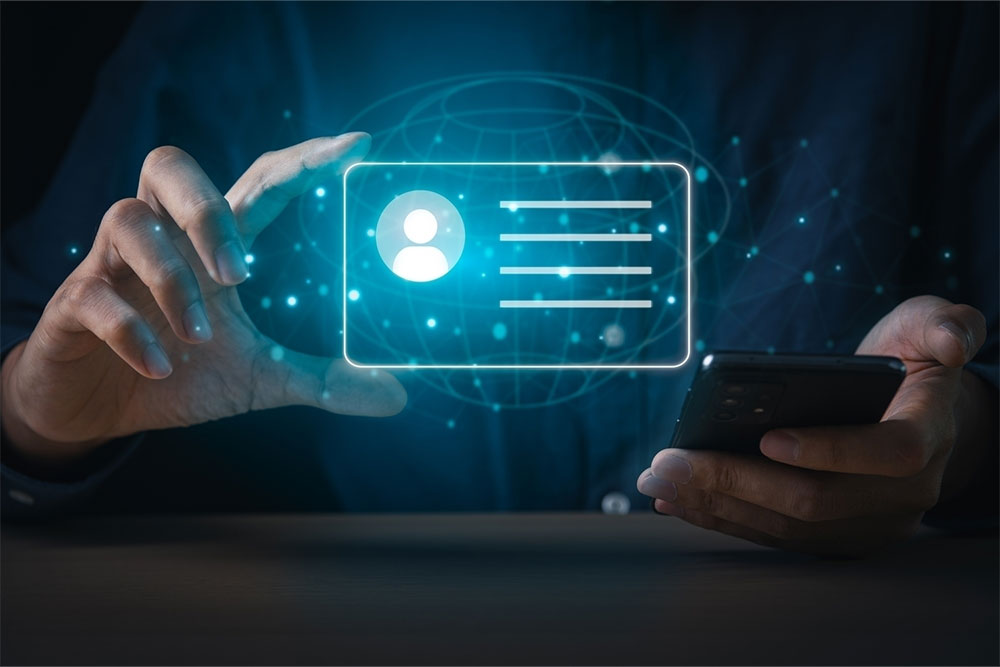Top 5 Online Identity Verification Methods
With digital frauds and scams becoming prevalent, businesses need to ensure that their online platform or website is opening its doors to only legitimate users and customers. This is why identity verification has become important across a wide range of sectors, including healthcare, banking, government services, and social media platforms. It has become imperativ e for them to now implement strong and updated online identity verification methods for the safety of the business and the users.
1. Two-Factor Authentication
Two-factor authentication or 2FA, also known as multi-factor authentication or MFA, is an online verification method that needs two forms of identification to confirm a person’s identity.

In most cases, two-factor authentication is usually added as an additional step for protection, as it works as a crucial barrier against issues like account takeover or ATO and identity theft frauds.
Generally, users encounter 2FA during the initial creation of their account. Later, they have to go through this process all over again whenever passwords have to be reset. Many systems implement this method as a re-verification measure too. This generally happens with verifications related to biometric 2FA.
2. Document verification
With the help of the document verification process, it is possible to check for a person’s authenticity through government-issued identity documents. This process involves checking various security features and other attributes to ensure that the document has not been damaged or is not fake. This form of verification method is typically used by sectors with heavy regulations such as luxury goods and banking. With document verification, they can detect risks for potential fraud and ensure complete compliance with anti-money laundering laws and Know Your Customer (KYC) process . Many free identity verification services offer document verification as a feature.
In most cases, the document verification involves examining digital as well as physical features of all the documents. This includes the machine-readable zones (MRZ) and format of the documents . At present, many top document verification solutions use Optical Character Recognition or OCR and Artificial Intelligence (AI) to automatically pull out information from the documents . Along with automation, these technologies also offer the benefit of assisting internal KYC teams and compliance specialists to detect any changes and forgeries in the documents at the earliest .
The document verification process typically involves-
- Registration
The user gives all the essential personal information like name, address, and date of birth to complete the process. - Document submission
The user submits government-issued documents like passport, birth certificate, utility bill, and other ID card for the verification process. - Verification check
The system checks the personal details submitted by the user against the documents that have been uploaded. - Access
The customer is verified to be legitimate and given access after the documents have been ascertained to be authentic.
3. Database verification
The database verification process is categorized under the KYC verification method. It is typically used for authenticating identity documents issued by the government. In addition, it also verifies additional information from other official sources like government registries. Most systems that use database verification check for information online through proprietary databases and public records as well.
Along with document verification, database verification provides another layer of defense against identity threats. For instance, both the processes can be used to match the photo and name of a person with those available in the government records prior to enrolling them in any financial service or setting up an account.
4. Credit bureau-based authentication
As the name implies, this authentication process makes use of data collected from different credit bureaus. This method works similarly to the database verification process and is mostly used by financial institutions like banks. It involves comparing the personal information of a customer with information from credit bureaus and is mostly used for authenticating the identity of customers for new account openings or loan application for mortgages.
5. Selfie verification
This verification method utilizes biometric information to authenticate the identity of customers . The process involves the customer taking a selfie using their smartphone by adhering to all the required guidelines specified by the software on the screen. This method is usually used while onboarding new users to the system. Sometimes, selfie verification is also used during re-verifcation processes, when customers are involved in large transactions, or when they make critical changes to their profile.
While this is not a foolproof method of identification , this selfie verification process is implemented and used as an additional layer of security. It is used in combination with other methods like government-issued document verification.
Most selfie verification systems make use of liveness detection technology, which detects fraudulent replicas and pose-based selfies that use prints and masks during the selfie taking process. With this technology, many factors can be assessed, from shadows to skin texture, reflections, and so on. Some can also detect AI-generated selfies, which is now commonly used by scammers to get through the verification process.
In general, there are two categories of liveness checks.
- Active liveness
In this, a customer has to perform a specific action, such as shifting their gaze or posing with a smile, to confirm their presence in front of the camera. - Passive liveness
This biometric security method uses algorithms to directly detect fraudulent behavior by scanning skin texture, light reflections, facial contours and other factors.
